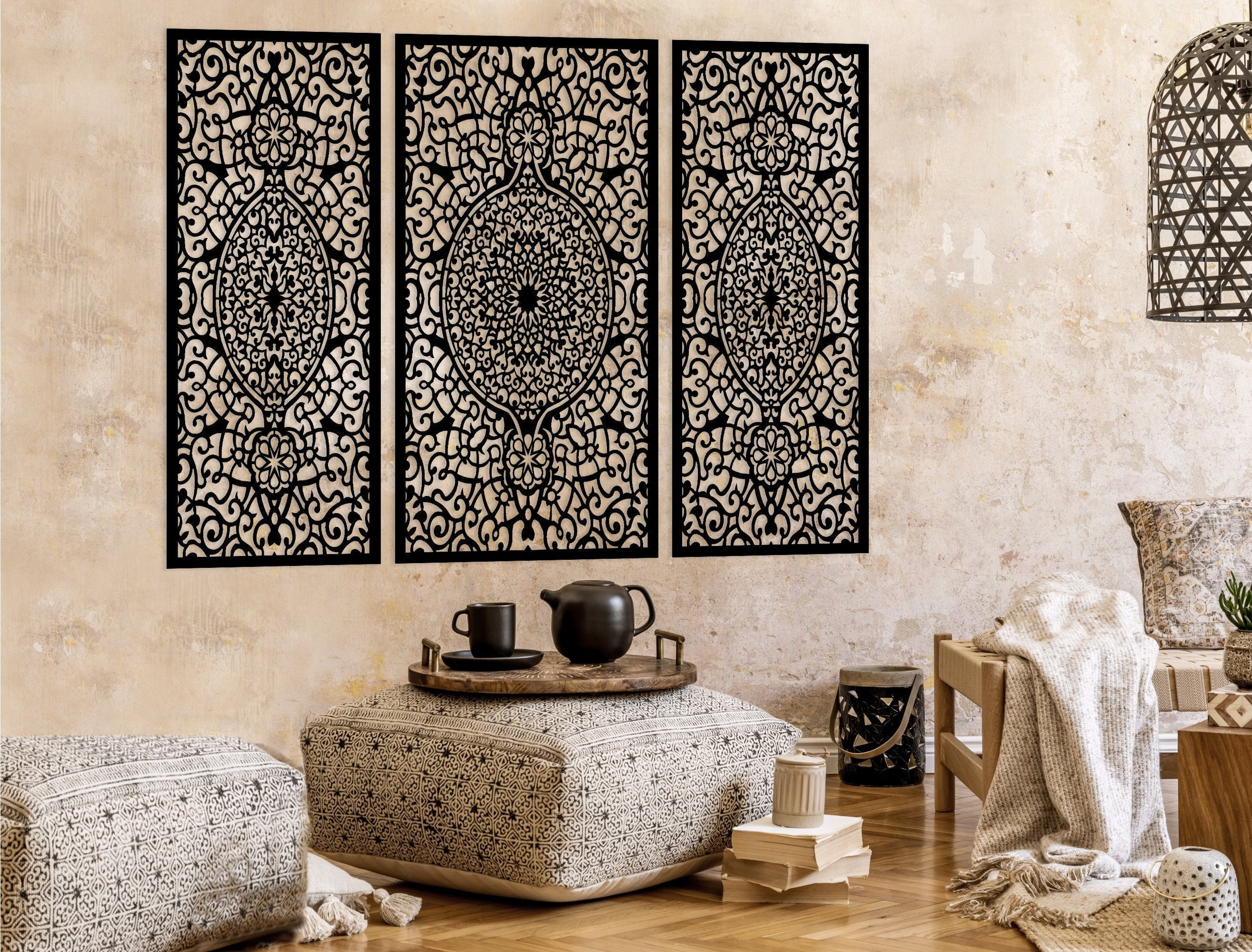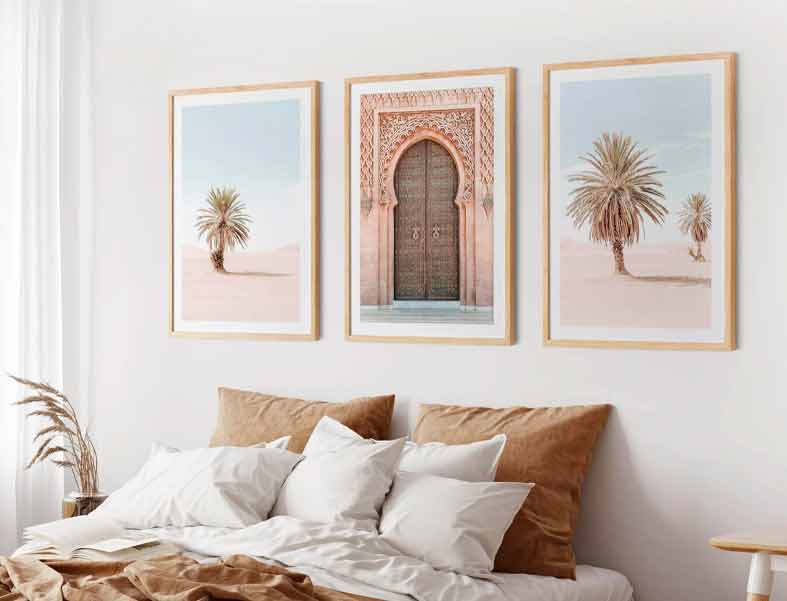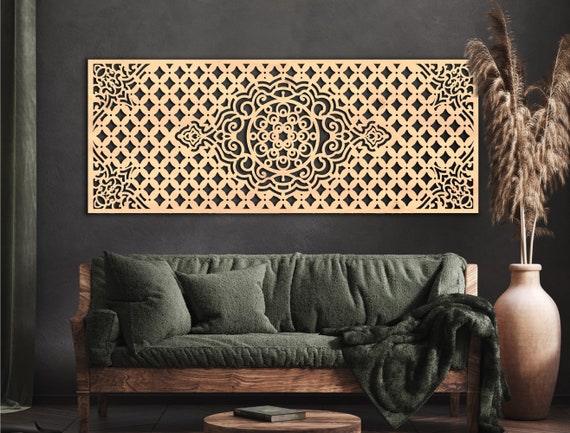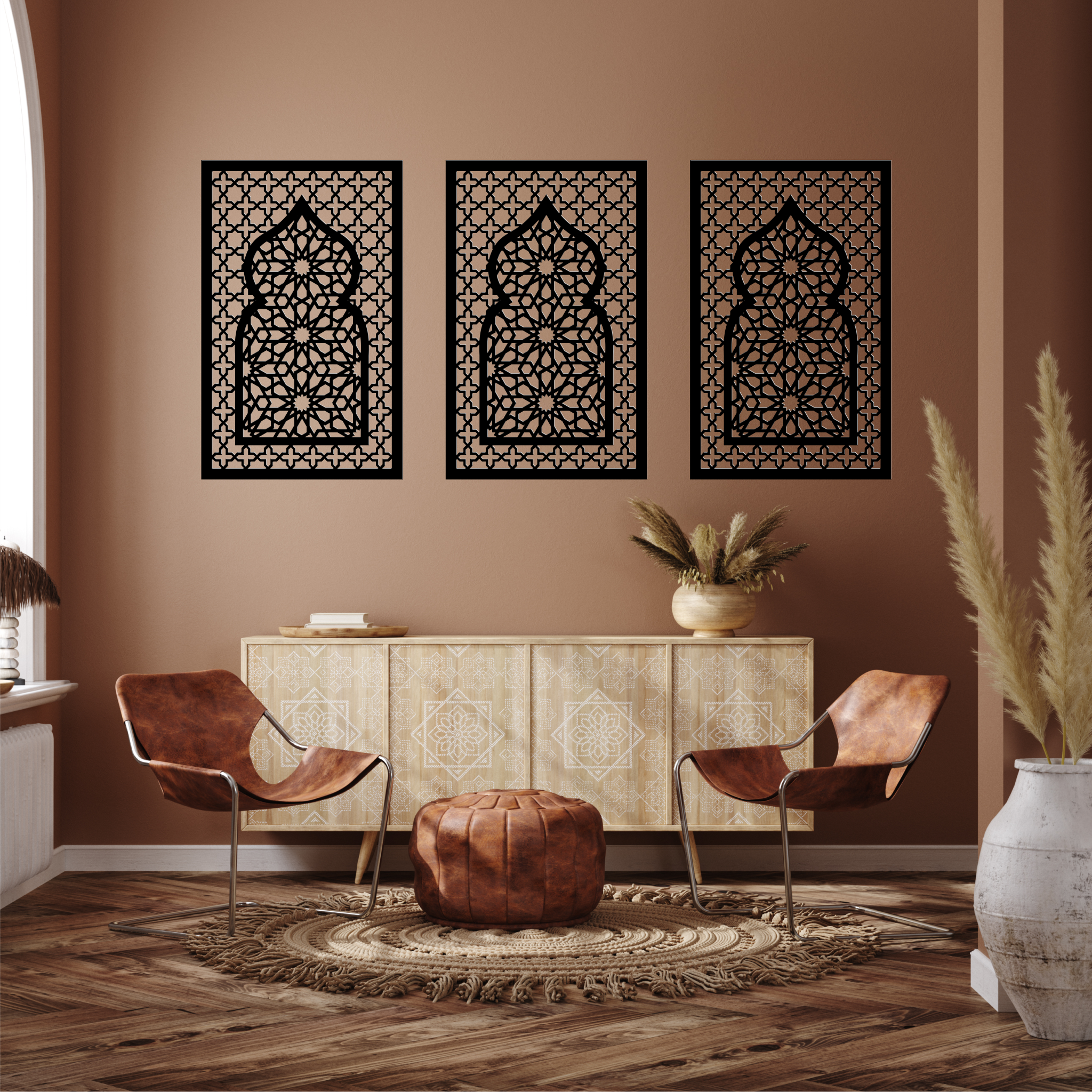If you’re looking to add a touch of elegance, culture, and vibrancy to your home, Moroccan wall décor is an excellent choice. With its intricate designs and vibrant colors, Moroccan art can transform any space into a warm and inviting oasis. In this comprehensive guide, I’ll share my personal insights, tips, and the essential features of Moroccan wall décor to help you make the most of this stunning style.
What is Moroccan Wall Décor?
Moroccan wall décor encompasses a range of artistic styles and techniques that reflect the rich history and culture of Morocco. From traditional plasterwork and ceramic tiles to vibrant tapestries and paintings, this décor style is celebrated for its intricate patterns and bright colors that can brighten any room. I remember when I first visited Morocco and was mesmerized by the stunning wall art in the markets, which sparked my passion for this design style.
The Origins of Moroccan Wall Art
The roots of Moroccan wall décor are steeped in a rich cultural heritage, influenced by Berber, Arab, and Spanish traditions. This blend of cultures has resulted in unique artistic expressions that feature geometric patterns, floral motifs, and calligraphy. Each piece tells a story, often reflecting the local landscapes, daily life, or religious beliefs.

Popular Types of Moroccan Wall Décor
When it comes to Moroccan wall décor, there are several types that stand out. Here’s a closer look at some popular styles:

1. Mosaic Tiles (Zellige)
Zellige is a traditional Moroccan art form that involves creating intricate mosaic patterns using hand-cut tiles. These vibrant tiles are often used to create stunning wall panels and tabletops. The colors are usually bright, featuring blues, yellows, and greens.

Pros and Cons of Zellige
| Pros | Cons |
|---|---|
| Durable and long-lasting | Can be expensive |
| Unique and colorful designs | Requires professional installation |
| Easy to clean | May require maintenance over time |

2. Tadelakt Plaster
Tadelakt is a traditional Moroccan plaster that is polished to a smooth finish. It is often used in bathrooms and living spaces for an elegant look. Tadelakt can be tinted in various colors, allowing for customization.

Pros and Cons of Tadelakt
| Pros | Cons |
|---|---|
| Water-resistant | Can be difficult to apply |
| Eco-friendly material | Requires skilled artisans |
| Beautiful finish | Higher initial cost |

3. Moroccan Mirrors
Mirrors in Moroccan design are often ornate, featuring intricate frames made from wrought iron or wood. These mirrors can serve as statement pieces in your décor.

Advantages of Moroccan Mirrors
- Adds depth and dimension to a room.
- Enhances lighting by reflecting natural and artificial light.
- Available in various sizes to fit different spaces.
4. Wall Hangings and Tapestries
Moroccan tapestries are rich in color and texture, often featuring bold geometric designs or intricate embroidery. They can be used to add warmth to your walls and make a room feel cozier.
Benefits of Using Tapestries
- Softens hard surfaces and adds warmth.
- Easy to hang and rearrange.
- Can be used for acoustic properties.
How to Incorporate Moroccan Wall Décor into Your Home
Incorporating Moroccan wall décor into your home can be a fun and rewarding process. Here are some tips based on my experiences:
1. Start with a Focal Point
Choose a standout piece, such as a large tapestry or an intricately designed mirror, to serve as the focal point of the room. This will set the tone for the rest of your décor.
2. Mix and Match Styles
Don’t be afraid to combine different styles! Moroccan décor can blend beautifully with other design elements like modern, rustic, or bohemian styles. For example, a vintage wooden table paired with Moroccan mosaic tiles can create a stunning contrast.
3. Use a Neutral Base
To make your Moroccan wall décor pop, consider using neutral colors for your walls and furnishings. Shades of white, beige, or light gray can provide the perfect backdrop.
Popular Color Palettes for Moroccan Décor
Moroccan wall décor often features a rich color palette. Here are some traditional color schemes:
1. Jewel Tones
This palette includes deep blues, emerald greens, rich purples, and vibrant reds, reminiscent of the vibrant markets of Morocco.
2. Earthy Tones
For a more subdued look, consider using earthy tones such as terracotta, sand, and olive green. This palette brings a natural feel to your space.
3. Bright and Bold
If you love a brighter look, opt for fun colors like bright yellows, oranges, and pinks. These colors can uplift the mood of your home and can be integrated using accessories and smaller décor pieces.
Where to Find Moroccan Wall Décor
When searching for authentic Moroccan wall décor, here are some great sources:
1. Local Markets
If you have the chance to travel to Morocco, visiting local markets is a must. You’ll find a variety of unique pieces that you can bring back home.
2. Online Retailers
Many online retailers specialize in Moroccan décor. Websites like Etsy, Wayfair, and Amazon have a vast selection of wall art and decorative pieces.
3. Home Décor Stores
Local home décor stores may carry Moroccan-inspired items, making it easier to find pieces without going too far from home.
FAQs About Moroccan Wall Décor
1. How do I clean Moroccan wall décor?
Cleaning your Moroccan wall décor depends on the material. For tiles, a simple mixture of water and mild soap works well. For fabrics and tapestries, follow the manufacturer’s care instructions.
2. Can I use Moroccan wall décor in a small space?
Absolutely! In fact, Moroccan décor can visually expand small areas by adding depth and color. Just be mindful of not overcrowding the space.
3. Is Moroccan wall décor suitable for outdoor spaces?
Yes! Many Moroccan items, particularly ceramic tiles and wrought iron art, can enhance outdoor spaces, creating an inviting atmosphere.
4. How can I create a Moroccan-inspired space on a budget?
Incorporating Moroccan elements doesn’t have to be expensive. Consider DIY projects like painting a DIY wall mural or making small décor items. You can also scour thrift stores for unique finds.
Conclusion: Embrace the Moroccan Aesthetic
Incorporating Moroccan wall décor into your home is a fantastic way to convey warmth, culture, and individuality. Whether you opt for classic mosaic tiles, vibrant tapestries, or ornate mirrors, each piece is sure to add charm to your space. As you experiment with different colors and styles, let your love for this beautiful art form guide you. Enjoy the process of transforming your space into a Moroccan-inspired sanctuary!